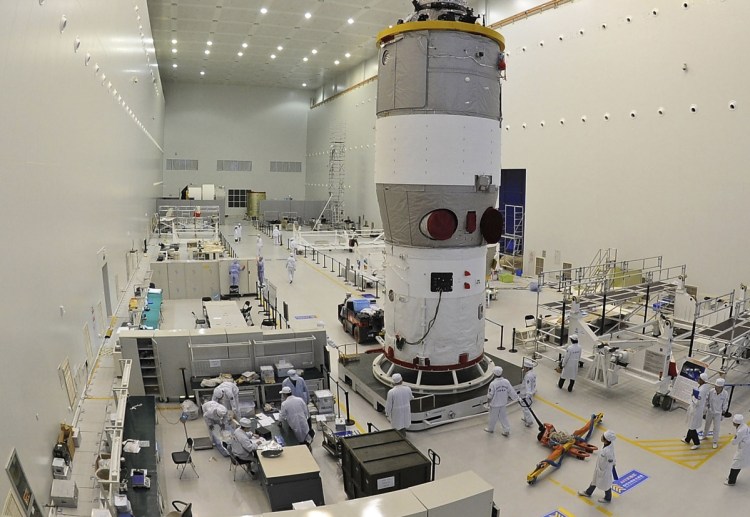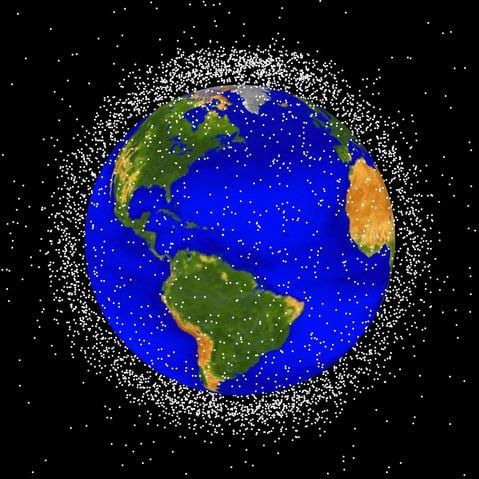BERLIN — If you want to catch a last glimpse of Chinese satellite Tiangong-1, you better hurry. Circling the earth at a speed of 17,500 mph every 90 minutes, the 19,000-pound satellite will likely have vanished by the end of this weekend, to reappear as a fireball for up to a minute or more somewhere over the skies of southern Europe – or perhaps somewhere else.
While nobody can be certain where exactly the disintegrating satellite may literally fall from the sky – with pieces weighing up to 220 pounds expected to make it to the Earth’s surface – the satellite’s fate has long been sealed. And even if you miss this one, scientists say there’s plenty more to come in the junk-strewn skies of Earth’s near orbit.
First warning signs for the Chinese station appeared in 2016 when it failed to respond to commands by its operators. Tiangong-1, a name that translates as “heavenly palace,” would eventually, according to my colleagues turn “into a man-made” meteor.
While the threat of the debris hitting a human is extremely small, the visual drama that might unfold over Europe’s skies this weekend may only be a first glimpse into a growing problem that will manifest itself over the next decades, according to some bleak predictions.
The European Space Agency estimates that there are now more than 170 million pieces of space debris in circulation, though only 29,000 of those are larger than about four inches. While such smaller space debris objects may not pose a threat to Earth because they would disintegrate before reaching the surface, “any of these objects can cause harm to an operational spacecraft. For example, a collision with a (four-inch) object would entail a catastrophic fragmentation of a typical satellite,” according to the European Space Agency. Smaller pieces could still destroy spacecraft systems or penetrate shields, possibly making bigger satellites such as Tiangong-1 unresponsive and turning them into massive pieces of space debris themselves.
Since the first satellites were launched in the mid-20th century, the Earth’s orbit has long been treated by nations as a waste site nobody felt responsible for. Spent rockets or old satellites now mingle with smaller pieces of trash left behind by human space programs. All of those pieces zig around faster than speeding bullets.
And while the international community is gradually becoming more aware of the challenges this poses, much of the damage is already done.
Speaking at a conference in 2011, Gen. William Shelton, a commander with the U.S. Air Force Space Command, predicted that much of the orbit around the Earth “may be a pretty tough neighborhood … in the not too distant future,” according to the astronomy news website Space.com. The U.S. military and NASA are both in charge of perhaps the most elaborate scheme to track objects bigger than four inches to predict their flight paths and move active equipment out of the way.
The problem, Shelton indicated at the time, is that the accumulation of space debris itself is already sufficient to lead to an exponential rise in circulating pieces. The more pieces there are, the higher the likelihood that they will eventually collide – and create even more, smaller objects that can still be extremely dangerous to other satellites or space labs.
On Earth, eco-systems can sometimes fix themselves to some extent, even if it may take decades or hundreds of years. But in space, the problem of debris will only get worse.
With more than 50 nations now operating their own space programs, initiatives to limit the release of space debris have hardly become any easier. “There are no salvage laws in space. Even if we had the political will to [salvage junk], which I don’t think we do, we couldn’t bring down the big pieces because we don’t own them,” Joan Johnson-Freese, a Naval War College professor, told The Washington Post in 2014.
Copy the Story LinkSend questions/comments to the editors.




Success. Please wait for the page to reload. If the page does not reload within 5 seconds, please refresh the page.
Enter your email and password to access comments.
Hi, to comment on stories you must . This profile is in addition to your subscription and website login.
Already have a commenting profile? .
Invalid username/password.
Please check your email to confirm and complete your registration.
Only subscribers are eligible to post comments. Please subscribe or login first for digital access. Here’s why.
Use the form below to reset your password. When you've submitted your account email, we will send an email with a reset code.